15 Movies to See at the 2021 Chicago International Film Festival
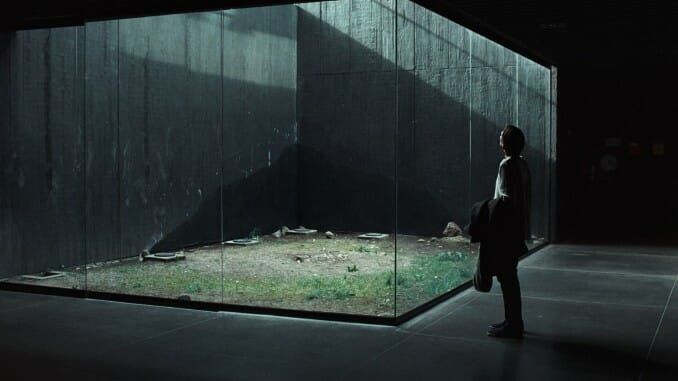
This is my first festival season as the editor here at Paste Movies, which means that when my local film fest rolls around, I, in turn, get to roll out the red carpet. And, thanks to this year’s Chicago International Film Festival having a virtual hub, many of the most buzzed-about features coming out of Cannes, Venice, Toronto and New York can play in living rooms around the Midwest. Running from October 13 – 24, CIFF offers 89 films in its program, 52 of which can be accessed online if you live in Illinois, Indiana, Iowa, Michigan, Minnesota, Missouri or Wisconsin.
So, whether you’re a Midwestern cinephile, a Chicagoan ready to head to the Music Box Theatre or someone simply curious about the movies film critics (and nobody else) have been talking about for the past few months, CIFF has plenty for you. Proof of vaccination or a negative COVID test is required to attend in-person films, though there are also a handful of great drive-in screenings for those looking to be extra safe while still seeing things on the big screen.
These aren’t all the films on offer over at this year’s CIFF, and you can find a list of their full program here, but here are 15 films you shouldn’t miss this year.
The Beta TestDirectors: Jim Cummings, PJ McCabe
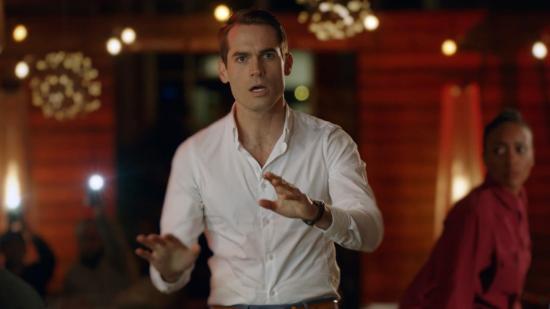
There’s never been a better time to let Jim Cummings drive you to the brink of scratching your own eyes out. The filmmaker/actor has been on a blitz since his Thunder Road came out in 2018, trailblazing a tense and jittery tone that takes extended uncomfortable one-sided conversations beyond cringe comedy to something more…feral. Fitting that he followed that film with The Wolf of Snow Hollow. The Beta Test pairs him with collaborator PJ McCabe (taking on co-star duties in addition to co-directing and co-writing) and brings that Cummings flavor to the erotic thriller. A film that’s particular raw sore is exacerbated by fake friends, social media and many other blends of Hollywood bullshit, The Beta Test continues pushing fragile veneers to their breaking points and far, far beyond. Once it’s frayed you to your core, you’ll be laughing at its bone-dry intensity while your body—hands clenching your armrests, legs restlessly pounding the floor—betrays your mindset. Cummings delivers another embodied performance of that ongoing personal war as a talent agent that gives into a mysterious night of desire. A bit of a wrench in his engagement to Caroline (Virginia Newcomb, measured and excellent). More surprising than that this film is another enthralling burst of energy is that it manages to fit its idiosyncrasies so successfully into a sexy, specific genre framework.—Jacob Oller
C’mon C’monDirector: Mike Mills
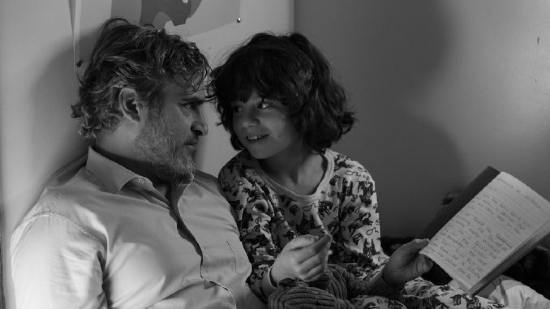
While continuing to mold his protagonists after his immediate family members—in C’mon, C’mon’s case his (and fellow filmmaker Miranda July’s) nine-year-old son—writer/director Mike Mills presents a picture of sincere sentimentality rooted not in previously occupied states of nostalgia or raw lived experience, but rather forward-looking hopefulness for an ostensibly fraught future. A year after the death of their mother, broadcast radio journalist Johnny (Joaquin Phoenix) reaches out to his sister Viv (Gaby Hoffmann) to amend a recent lack of communication. While catching up, Viv reveals that her ex-husband Paul (Scoot McNairy) is in the midst of a bipolar episode in the Bay Area, and she feels compelled to go and convince him to seek inpatient care. Johnny has only one question: Who is going to watch her son Jesse (Woody Norman) while she’s away? Though originally tasked with watching his nephew for only a few days, extenuating circumstances lead to Jesse accompanying Johnny on an extensive city-spanning reporting project. Fittingly, the assignment finds Johnny and his colleagues conducting audio interviews with children across the country, gauging their thoughts on matters of the heart, mind and soul—specifically, what do they think the future will look like? Despite undertaking an intimate story about the oft-overlooked interiority and intelligence of American adolescents, Johnny finds himself wholly unsure about his ability to assume the role of caretaker for his own relative. While it’s true that a slew of films have previously explored the clash between children and impromptu guardians when assimilating to their newfound roles (John Cassavetes’ Gloria, most notably, as well as the Phoenix-starring 2017 Lynne Ramsey film You Were Never Really Here), C’mon C’mon differs from its predecessors by maintaining the innate innocence of the children involved. It’s hard to imagine the film’s success without the dynamic chemistry between Phoenix and Norman, with the two seamlessly playing off one another’s dialogue and an air of childlike spontaneity permeating every interaction. Norman’s performance is a rarity in that it displays obvious talent while preserving a childlike playfulness that never feels over-acted. Though the central radio piece that Johnny and his colleagues gradually construct during the film is initially depressing in its assertion of just how cognizant young people are to the perils of the world that await them in adulthood, it is also heart-wrenching and hopeful in its honesty. Virtually none of the subjects interviewed perceive the future as entirely void of opportunity for improvement—and if at least some children truly believe that things can turn around for their generation, wouldn’t dismissing that tender optimism be the same exact brand of condescension that many of the kids express frustration with? In amplifying the diverse voices of American children through the film’s radio vérité subplot, C’mon C’mon proves that kids have some pretty insightful advice to impart, if only we’d just listen.—Natalia Keogan
Drive My CarDirector: Ryusuke Hamaguchi
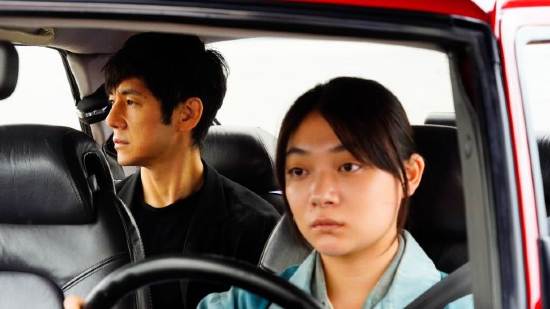
The melodic rotating faces of tire rims and cassette reels keep the time in Drive My Car, Japanese director Ryusuke Hamaguchi’s languorous adaptation of Haruki Murakami’s short story of the same name. The film’s meticulous commitment to unhurried emotional introspection might appear to be an overindulgence when considering its three-hour runtime, yet Hamaguchi and co-writer Takamasa Oe gracefully unfurl Murakami’s original story into a melancholy meditation of pain and performance that remains ever-enthralling. Renowned theater actor-turned-director Kafuku (Hidetoshi Nishijima) and his screenwriter wife Oto (Reika Kirishima) have what seems like a perfect relationship. Apart from sharing considerable marital bliss, they stimulate each other intellectually and sexually—oftentimes simultaneously. Oto will regularly weave narrative webs aloud while mid-coitus with Kafuku, reaching climaxes in literal and figurative senses. Despite the mutual adoration, both harbor a damning secret: Oto sustains a string of lovers as she hops around on productions, while Kafuku silently uncovers his wife’s infidelity without confronting her. Both maintain the facade of a remarkably happy couple that have been together for over 20 years, yet internally struggle with the emotional toll of concealing the extramarital affairs. The situation is only brought to a head years later, after Oto sustains a mortal injury and Kafuku covertly recognizes one of Oto’s past lovers at an audition for his forthcoming multilingual production of Chekhov’s Uncle Vanya. Simultaneously consumed by jealousy and intrigue, Kafuku casts his wife’s much-younger former paramour Takatsuki (Masaki Okada) in the titular role. The loneliness inherent in living through guilt-ridden grief is perhaps the most palpable aspect of Hamaguchi’s latest drawn-out feature. However, it is also the open embracing of this desolation that eventually yields the most tender and subtly exuberant results. It is through communal mourning—for lives (and lovers) shared or for the unknowable misfortunes of others—that ultimately binds us as human beings.—Natalia Keogan
DuneDirector: Denis Villeneuve
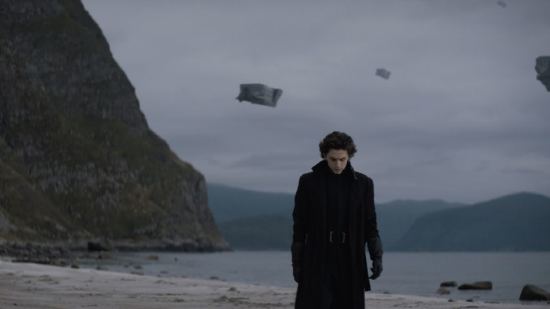
Both technologically innovative and narratively faithful to the original text, Denis Villeneuve’s Dune is bolstered by its seamless special effects and starpower above all else. Considering the director’s previous work in these arenas—namely Enemy, Arrival and Blade Runner 2049—he should be totally adept for the challenge. Yet there exists a nagging query that begs to be quelled: How much of this film is predicated on the sheer fact that cinematic advancements have finally rendered Dune an attainable possibility? Though it remains true to the first part of the text’s unhurried pace and detailed world building, Villeneuve’s adaptation feels overlong and void of subtext. It’s important to note that the film only adapts the first part of Herbert’s novel, which is notoriously kind of a slog. Much of the plot is focused on worldbuilding and creating an incremental immersion into the immaterial political hierarchies that shape this unknown yet familiar world. Admittedly, Villeneuve evokes and embraces this unhurriedness—a choice that just might predicate Dune’s future fortune. By limiting the scope to Part I, Villeneuve’s Dune maintains a consistent tone and sense of time—though it invariably drags over the course of two and a half hours. However, the meandering pace may perfectly suit fans of the original novel, which captures a certain pensive density indicative of the text. To be fair, there is a plain reason as to why Villeneuve opts for a subdued and sedated Dune. With so many failed attempts at adapting Herbert’s novel preceding it, how could the project ever fully embrace auteur-driven artistic risk? It translates as Villeneuve playing it safe, expending all of his energy on ensuring that his remake can’t possibly flop. Though Dune is faithful and fantastical in vision, its existence is merely proof that the enduringly popular novel can, in fact, be adapted into a box office hit.—Natalia Keogan
FleeDirector: Jonas Poher Rasmussen
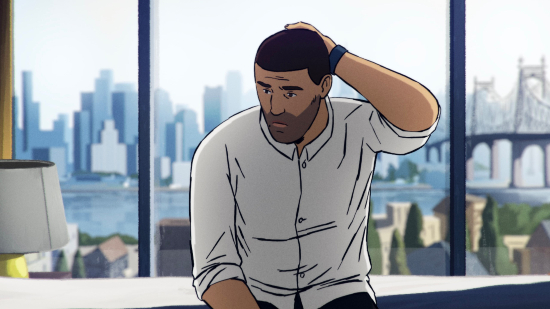
“Flee.” It’s an imperative, a one-word title telling the audience what a person has to do to save themselves from cultural takeover by barbarians with too many guns: Get the hell out of Dodge. Run for your lives. Flee. Danish documentarian Jonas Poher Rasmussen’s new movie animates the truth of one man, Amin, Rasmussen’s friend, who for the first time in his adult life (and in his relationship with Rasmussen) has decided to open up about the time he and his family cut town when the Taliban took over Kabul. Being an everyday non-fundamentalist person in Afghanistan is hard enough with those lunatics in control. Being both everyday and non-fundamentalist and a closeted young gay man is worse. Sounds real damn grim! It is, of course, and that unavoidable bleakness softens and sharpens through the film’s animated presentation. Using animation to reenact Amin’s perilous journey from Afghanistan to Denmark, with stops along the way in Russia and Estonia, has a way of layering the stunning cruelty Amin endures and observes on the road to safety with an electric playfulness: Even the worst real-life images gain a certain exuberance when recreated by hand. But the film comprises Amin’s recollections, and human memory being what it is—simultaneously faithful, fuzzy, and faulty—the casual alchemical qualities so intrinsic to animation as a medium pull those recollections into harsh relief. Maybe this is the only way Amin can face his past. Animation also has a way of feeling more alive than live-action, or alive in its own separate way, which makes Flee’s darkness all the darker. But Rasmussen isn’t using Amin to make suffering porn. He’s letting Amin tell his story his way. Animation only ultimately acts as a veneer. Even through the layers of artifice, what this movie shows us may be one of cinema’s most harrowing refugee stories.—Andy Crump
The French DispatchDirector: Wes Anderson

As was the case with 2014’s The Grand Budapest Hotel, The French Dispatch is a story within a story—or, in this case, multiple stories within a story, and there are stories within those stories as well. Wes Anderson remains a creative force to be reckoned with. Frequently rebuked by naysayers for his commitment to his finely-tuned, “quirky” filmmaking style, The French Dispatch proves he is more interested than anything in how to play around with the medium of film and find new ways to tell his stories. Here, he challenges himself to a far more intricate means of storytelling, which is occasionally convoluted but fosters an eagerness to return to the film—to revisit and discover something new. Additionally, he trades previous forays in stop-motion animation for an extended 2D animated chase scene, and even briefly swaps his prototypically stationary, symmetrical camerawork for a dinner table sequence in which the camera slowly revolves around the seated characters, creating a novel and striking dimensionality to his cinematography. Timothée Chalamet, Jeffrey Wright and Benicio del Toro, in their respective first collaborations with the director, could not have been more perfectly attuned to Anderson’s highly specified wavelength. Even minor roles from new Anderson inductees like Elisabeth Moss, Henry Winkler, Christoph Waltz and Rupert Friend are, as could be expected from a perfectionist like Anderson, a snug fit. The precision with which Anderson once effortlessly deployed anguish, familial strife, love, insecurity and, perhaps above all, loss, within his carefully constructed signature filmmaking is largely absent from his newest endeavor. The various storytelling gimmicks take center stage, while the characters are forced into the back seat. The film becomes a wry showcase for the director’s evolution as a creative who has been refining an unparalleled style for over two decades, with a sharper humor but without the more deeply felt pulse of films like The Darjeeling Limited, Fantastic Mr. Fox or most recently, and most effectively, The Grand Budapest Hotel. Still, it’s not to say that The French Dispatch’s bones are absent of any meat at all. “What happens next?” ends up a proportional sentiment to that of the film’s titular publication, the disappearing town it’s set in and the overall theme within Wes Anderson’s tenth feature: The eternal battle between art and capital. The question of “What happens next?” is less an inquiry as to the future of a shuttered, fictitious publication than a worrying, real-life prophecy, and The French Dispatch acts as a dialogue with this fear of the future of art. In this respect, it’s hard to argue that this latent dissolution of character depth is a net negative, when Anderson is clearly interested in, more than anything, growing and evolving as an artist.—Brianna Zigler
A HeroDirector: Asghar Farhadi
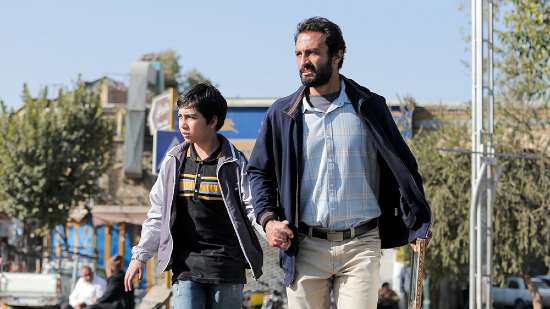
What’s the price for having a conscience? Iranian master Asghar Farhadi’s A Hero spirals out a good deed to all its messy conclusions, providing fertile ground for the filmmaker’s command of aesthetic realism and closeknit interpersonal dynamics. Rahim (Amir Jadidi), a jailed debtor, returns a bag filled with money that he found on leave. The consequences from that act, pushed and prodded and wheedled by Farhadi’s script—which adds a deft understanding of social media to a sharply constructed web of relationships and reputations—are an endurance test for the tear ducts. Doomed nobility is the biggest ask for Jadidi, but his big toothy smile and world-beaten posture allow him to find the perfect amounts of charm (whether genuine or off-putting) or pathos (which we know he’d hate) in Rahim. Sahar Goldoost, Maryam Shahdaei and Alireza Jahandideh make the film a truly potent ensemble drama, while Farhadi’s daughter, Sarina Farhadi, has a memorable return to the screen a decade since her last role, in Farhadi’s A Separation.—Jacob Oller
MemoriaDirector: Apichatpong Weerasethakul
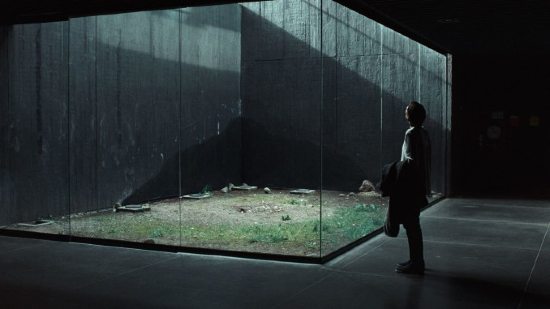
In eminent Thai director Apichatpong Weerasethakul’s latest feature, Memoria, central character Jessica (Tilda Swinton), a British expat living in Colombia, finds herself attending a last-ditch medical consultation. She explains to the attending physician that she hasn’t been able to sleep at night due to an increasingly persistent banging sound of indeterminate origin—and she wonders if a pill could be prescribed to calm her nerves? The physician all but refuses, offering two wildly different salves for her auditory predicament: She can either seek solace in Jesus, or the exquisite Salvador Dalí painting hanging in the building’s lobby. Both options register as ludicrous compared to the prospect of a nightly Xanax, however, the tangible presence of spiritual and surreal forces is an essential tenet of Weerasethakul’s work. Without divulging specific narrative details, the film’s unfurling is closely tied to the fact that Jessica’s sonic affliction is concurrent with the progression of a century-long project to bore a hole through the adjacent Andes mountain range. Although Memoria’s Latin American location, English/Spanish-language dialogue and big-city backdrop indicate a major shift in Weersethakul’s feature filmmaking practice, it remains emblematic of his penchant for applying the metaphysical properties of lucid dreams and inherited memories to otherwise quotidian human experiences. The politics of Memoria and Weersethakul’s broader filmmaking practice are intentional yet enigmatic, offering kernels of thought without immediately discernible exposition. This is what makes his films so ethereal and affecting—vivid and vague at once, it is facile to transfer one’s own subliminal anxieties, desires and hazy vision to seemingly sparse narratives. Memoria does feel like a significant departure from the director’s previous work—despite the director’s continued investment in withholding tangible resolution—by way of the film’s fantastical, exhilarating climax and comparatively linear mystery-driven storyline. There is still a sense of dreamlike suspension, just on the precipice of decipherable revelation. Time melts beyond its tangible limits when watching Memoria, resulting in an audiovisual trance disorienting in its peculiar placidity.—Natalia Keogan
Oscar Micheaux—The Superhero of Black FilmmakingDirector: Francesco Zippel
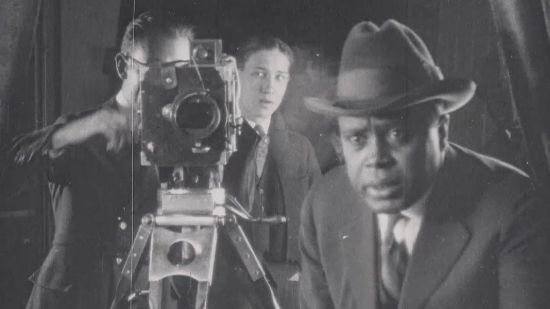
A straightforward and linear history lesson, documentary Oscar Micheaux—The Superhero of Black Filmmaking is an 80-minute case for binging as many of the pioneering Black filmmaker’s movies as possible. And yes, if that means sitting down for a film that’s not a visual spectacular, but a much-needed spotlight, that’s worth it all the same. A groundbreaking figure—whose life is mostly a matter of historical speculation—who worked from the ‘20s forward, Micheaux was an indie marvel, a man whose movies spanned silent to talkies, addressing a variety of dramatic stories focused on middle-class Black life with panache, style and a social realism that operated as a direct response to the venomously racist white films of the day. That he was able to make the movies at all was a direct response, in fact. Full of engrossing film clips, cheapy animated reenactments, restoration behind-the-scenes and talking heads ranging from academics to filmmaking giants like the late John Singleton and Melvin Van Peebles, Oscar Micheaux—The Superhero of Black Filmmaking is brisk and inspirational—especially once it breaks away from a more standard Wikipedia biography of the industry legend. Assessing how Micheaux set the stage for so many facets of the film industry, putting the man and his work in context with his time and the future he helped shape, will be an ongoing and worthwhile endeavor. You can find plenty of Micheaux movies (I recommend Paul Robeson’s film debut, Body and Soul) on the Criterion Channel.—Jacob Oller
Parallel MothersDirector: Pedro Almodóvar

Set in 2016, Parallel Mothers follows Janice (Penélope Cruz), a professional photographer in her 40s who begins a casual fling with forensic anthropologist Arturo (Israel Elejalde). Nine months after a particularly steamy encounter, she checks herself into a Madrid hospital’s maternity ward, preparing to give birth and raise her child as a single mother. As fate would have it, her roommate is in a similar position, save for the fact that she’s over 20 years Janice’s junior: Ana (newcomer Milena Smit) is also without a partner, her only support during labor being her self-absorbed actress mother (Aitana Sánchez-Gijón). While Janice is thrilled that she’s been given the impromptu opportunity to become a mother, Ana is initially resentful of the circumstances that have led to her pregnancy. Yet the two women quickly bond, taking strolls down the sterile hospital halls in order to help their babies descend down the uterus. Coincidentally, they both give birth to beautiful baby girls, and exchange numbers in order to keep in touch as they embark on the journey of newfound motherhood. Though the film sets itself up as an straightforward examination of the peculiar perils of parenthood—particularly for women who raise children outside of the confines of conventional, heterosexual nuclear families—Pedro Almodóvar instead utilizes multiple generations of matriarchs to bring light to the families irreparably broken by the cruelty of Spain’s not-so-distant fascist regime. The initial reason why Janice approaches Arturo is to inquire if he could use his connections to organize an excavation of a mass grave in her hometown—one of the bodies buried being that of her great-grandfather. In many ways, Parallel Mothers is also an atonement on Almodóvar’s part for his own distancing from this period of Spain’s history, particularly considering that his own film career flourished after Franco’s decline. For a director who has never shied away from portraying society’s most controversial taboos on-screen—incest, rape, suicide attempts, pedophilia and even golden showers—the fact that it has taken him his entire career to explicitly incorporate the effects of the Spanish Civil War into his work demonstrates the country’s relative inability to reckon with it. Though Almodóvar has stated that none of his own family members were victims of fascist brutality, his dedication to the ongoing plight of the families of those who perished infuses the film with an almost uncharacteristic sense of levity and sorrow. While this is certainly a shift in the filmmaker’s melodramatic and outlandish sensibilities (though this has been shifting significantly since his 2019 semi-autobiographical Pain and Glory, followed by the deconstructive short The Human Voice), it never feels mishandled in his grasp, always remaining sensitive even while incorporating shocking twists and revelations. Particularly paired with Cruz’s knockout performance of a woman whose life endures the legacy left by the trauma of her family’s unresolved past, Parallel Mothers is a deeply political example of what is lost when we have forgotten—and what is achieved when we fight to remember.—Natalia Keogan
Petite MamanDirector: Céline Sciamma

A year or two ago, I asked my mom whether she feels like her age, or if she feels younger. I told her that I still don’t feel like I’m an adult, that I feel like a teenager disguised as a person in their mid-twenties. I wanted to know if my mom had ever felt this feeling, and if she had, if it ever goes away—if people ever reach a point where they know that they’ve finally, officially stepped into adulthood and shed their adolescence. She admitted that sometimes she does feel like she ought to: Like a woman in her early sixties. But most of the time, in every way that isn’t physical, she still feels like a kid. In Petite Maman, Céline Sciamma’s follow-up to 2019’s Portrait of a Lady on Fire, the French director returns with a much smaller affair by comparison: A compact, 73-minute (yet nonetheless affecting) portrait of grief, parenthood and the constant dialogue between our past and present selves. Following the death of her maternal grandmother, eight-year-old Nelly (Joséphine Sanz) travels with her parents (Nina Meurisse and Stéphane Varupenne) to her mother’s childhood home. By all accounts, little Nelly seems to get on well with her mother. During the journey from the nursing home, Nelly attentively feeds her grieving parent cheese puffs and apple juice from behind the driver’s seat, then slides her tiny arms around her mother’s neck in an embrace to comfort her as she steers the wheel. But grief is a concept largely foreign to a child wise beyond her years and eager to play pretend as an adult, yet still distant to the reality of death. In the wake of her grandmother’s passing, as her mother clears out her old family things from the house, Nelly laments with more annoyance than anything that she bid a farewell to her relative that wasn’t the right kind of goodbye. She would have given her a better goodbye if she had known it would be her grandmother’s last. “We can’t know,” her mother tells her, and the two of them fall asleep wrapped in each other’s arms. But when Nelly awakes the next morning, her mother is gone. It’s a discovery less crushingly felt due to an implied absence that Nelly is familiar with. And her spacy yet well-meaning father can’t give Nelly a straight answer as to where her mother has up and left, but he doesn’t seem too concerned about it. The grieving process is something he’s acquainted with, but something he’s reluctant to impart upon a young kid. So, Nelly, an only child, goes off to play in the woods by herself to occupy her time during this confusing interlude. It’s there in the wilderness behind her mother’s old house that Nelly discovers a little girl about her height, about her same hair color and face shape, who lives in a home exactly like the one just beyond the path in the woods where Nelly came from. A little girl named Marion (unsurprisingly, Joséphine’s twin sister, Gabrielle Sanz) who’s building a branch fort in the woods; the same branch fort that Nelly’s mother had once made when she was around Nelly’s age. With a gentle touch, Sciamma crafts a profound, easily digestible film that takes heavy themes and makes them bite-sized. She looks at the way we speak to one another, and to ourselves, at every age, and how these conversations are inevitably dulled in the schism between a child and their parent. Our parents only know one sliver of our own personhood just as time has robbed us of knowing our parents, their proximity to changing our diapers and teaching us to drive stunted by the lives we create as we become our own people, and as we grow to understand that our parents are people, too. Petite Maman is about this dialogue we create with our families that is just as meaningful, if often frustrating, amidst the fractures inherent to our relationship with them.—Brianna Zigler
The Power of the DogDirector: Jane Campion

Based on the 1967 novel of the same name by Thomas Savage, Jane Campion’s long-awaited return to the medium of film—following 2009’s Bright Star and her subsequent years spent working in television—feels apt for a director who has demonstrated prowess at crafting an atmosphere of acute disquiet. And so it goes for The Power of the Dog, a film with a perpetual twitching vein, carried by the ubiquitous feeling that someone could snap at any moment—until they do. In 1925 Montana, brothers Phil (Benedict Cumberbatch) and George Burbank (Jesse Plemons) are prosperous cattle ranchers but incompatible siblings. Phil is the ultimate image of machismo, brooding around the ranch ever adorned in his cowboy outfit and a thick layer of grime on his face, a rolled cigarette hanging against his lower lip; a character that acts in defiance of Cumberbatch’s past work. Phil is so opposed to anything even adjacent to what could be considered “feminine” that things like bathing, playing an instrument that isn’t a banjo and just being nice to women are the kinds of activities which might lead Phil to inquire “Fellas, is it gay if…?” on Twitter. From the castration of the bulls on the Burbank ranch, to Phil’s status as the black sheep of his respectable family, to the nature of the western landscape tied to Phil’s performance of masculinity, the subtext is so visually hamfisted that it remains subtextual only by virtue of it not being directly spoken out loud. But the clumsiness in the film’s approach to its subject matter is propped up by the compelling performances across the board—notably from Cumberbatch, whose embodiment of a gruff and grubby rancher is at first sort of laughably unbelievable in relation to the performances that have defined the Englishman’s career. But it is, perhaps, because of this very contrast to his past roles that Cumberbatch manages to fit into the character of Phil so acutely, carrying with him an inherent awkwardness and unrest in his own skin despite the terror that he strikes in the heart of someone like Rose. He’s matched by the chilling score, composed by the inimitable Johnny Greenwood (The Master, Phantom Thread), and impeccable cinematography from Ari Wegner (Zola, The True History of the Kelly Gang), which form a perfect union of tension, intimacy and isolation in a film where the sound of every slice, snip and click evokes the same distressing sensation regardless of the source. What does it mean to be a man? The Power of the Dog considers the question but never answers it. Instead, it is preoccupied with a timeless phenomenon: The suffering endured for the very sake of manhood itself.—Brianna Zigler
The Velvet UndergroundDirector: Todd Haynes

“[The Velvet Underground] had entropy within it,” one of the many talking heads featured in Todd Haynes’ documentary reflects, chewing on the ultimate fate of the band at the center of it all towards the end of The Velvet Underground. It’s true that the avant-garde artists Haynes details in his first doc were more a single moment in time that rippled outward, a doomed endeavor not meant to last in the most immediately tangible way. Lou Reed and his ragtag team of black-clad counterculture musicians were a single thread within the vast, wide-spanning fabric of 1960s New York City, rubbing shoulders with artists, writers and musicians, and leaving a mark that would see their influence last long after the band’s members had already parted ways. In this respect, Haynes (who may be new to documentary but, with Velvet Goldmine and I’m Not There, is no stranger to music movies) aptly paints a portrait of The Velvet Underground, albeit not with people unfamiliar with the band in mind. He never spends too much time in the past that led to their artistic zenith or the legacy that it would leave behind, or even allows much space for true linear comprehension of the band at all. Through a rhythm which may feel inaccessible to more casual listeners, Haynes nonetheless effectively reckons with the moment that the band entered the world and the moment that they vacated.—Brianna Zigler
What Do We See When We Look at the SkyDirector: Alexandre Koberidze
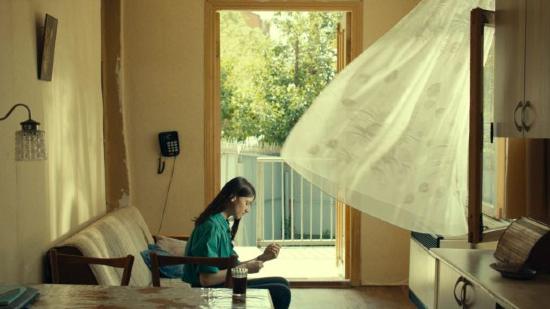
When Lisa and Giorgi first meet, we don’t see their faces—only the awkward tangle of their legs and feet as they fumble to return to the paths they were on before their idiosyncratic meet-cute. When they encounter one another a second time, their bodies are framed at such a great distance, so off-centered, that they are rendered to us as unnoticeable ants. Before we can become more acquainted with their faces, they have become different faces entirely. In the young lovers’ world—and, perhaps, in ours—magic exists all around them, acting in untraceable harmony with the natural environment, as ordinary and as powerful as love. The supernaturally tinted story of Lisa (Oliko Barbakadze) and Giorgi (Giorgi Ambroladze) is the main one of Alexandre Koberidze’s sophomore feature, What Do We See When We Look at the Sky?, but it is not the only story in the Georgian director’s 150-minute film. Shot in part on saturated 16mm, director of photography Faraz Fesharaki captures Kutaisi in a hazy, warm color palette, where the radiance of otherworldly oranges and yellows manage to cut through even all-encompassing darkness. Characters occasionally, but not always, communicate in stilted dialogue. Lisa and Giorgi’s opening meet-cute is spoken as if it were lifted from a script written by Yorgos Lanthimos or Wes Anderson. At one point, a man approaches Lisa for some thread or fishing line and promises her that she’ll get it back (which got a chuckle out of this critic). “Spells are outdated” Lisa’s friend tells her bluntly, after Lisa worriedly reveals the curse that’s been placed upon her as told by the helpful seedling, camera and rain gutter. In the film, the everyday and the strange coexist—and sometimes they are one and the same. Magic spells and talking trees are as mundane as the luckless owner of Lisa and Giorgi’s café, who can’t seem to set up a projector to properly display the soccer game for patrons. The film is artistic but playful, though undoubtedly inaccessible for some due to its overlong runtime and aimless narrative approach. It’s a film that requires patience, but if you are willing to meet it on its terms, it sustains an eagerness throughout to surprise and engage. In this way, Koberidze’s method mirrors the very world around us. His unfocused take on a fantasy rom-com anchors us with a story of a missed connection and summons us to look for the magic that exists in the most unexpected of places, while his storybook narration still gently urges not to overlook the tragedies which hover on the periphery. What Do We See When We Look at the Sky? is an apt, simple fable that feels somewhat hopeful for our modern world—one where evil wins, but love overcomes.—Brianna Zigler
The Worst Person in the WorldDirector: Joachim Trier

Millennials were born into a world that no longer demands much of young people, yet somehow expects even more of us. Not as long ago as we might think, it was the norm for adults in their 20s and 30s to have it all figured out. A spouse, a career, a gaggle of children—at least one of these things and even better if all three. Young people now are caught in this strange purgatory between child and adult. We are afforded more time to become who we want to be and there is more pressure than ever to do so. Enter Julie (Renate Reinsve, Dakota Johnson’s long-lost twin), a fickle Norwegian who has never stayed committed to one thing in her entire life. A teenaged overachiever, she dabbled in medicine before she discovered that she was more interested in matters of the soul than the body. So, she cuts and dyes her hair, dumps her med school lover and pivots to psychology pursuits before burning that all down too, shifting once again—this time to photography. But unsurprisingly, photography manages to bore Julie as well, and soon enough she’s off to the next new thing, next new hairstyle, next new guy in the adult coming-of-age film that is Joachim Trier’s The Worst Person in the World, the director’s follow-up to the 2017 supernatural thriller Thelma and his fifth film overall. Prior to this breakneck, whimsically-scored narrated montage of Julie’s life so far (edited with precision by Olivier Bugge Coutté and scored by Ola Fløttum), the narrator explains what’s going to happen: This is a film in twelve chapters, complete with a prologue and an epilogue. Thus, The Worst Person in the World functions like a fractured collection of moments in one person’s life as they strive for self-actualization. The chapters are never consistently timed, some lasting only a few minutes and others lasting the length of a television episode, creating an atmosphere in which we never know how much time has passed, and yet time is passing all the same—and quickly—for Julie. When we’ve finally caught up to her present, she’s entered into a long-term relationship with a successful, 44-year-old graphic novelist named Aksel (Anders Danielsen Lie), whose prosperous career has given her the stability to work a day job at a bookstore while she decides what she wants to set her sights on next. Joachim Trier’s The Worst Person in the World is as indecisive as its endlessly curious heroine, but it is an invigorating, exceedingly kind portrait conveying that the journey is just as—if not more—crucial as the place we end up.—Brianna Zigler







































